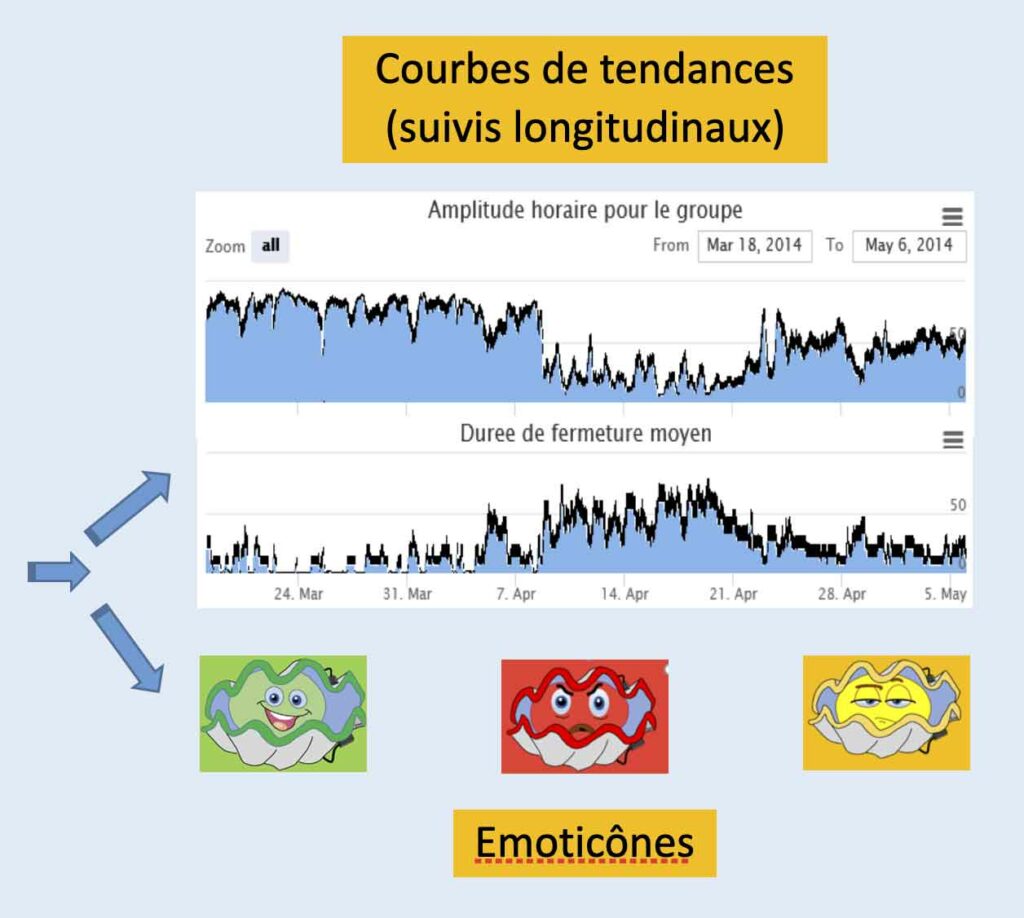HOW DOES IT WORK?
Our solution
The advantages of the molluSCAN-eye® solution
molluSCAN-eye® is a real technological breakthrough.
Our solution Respect for the living
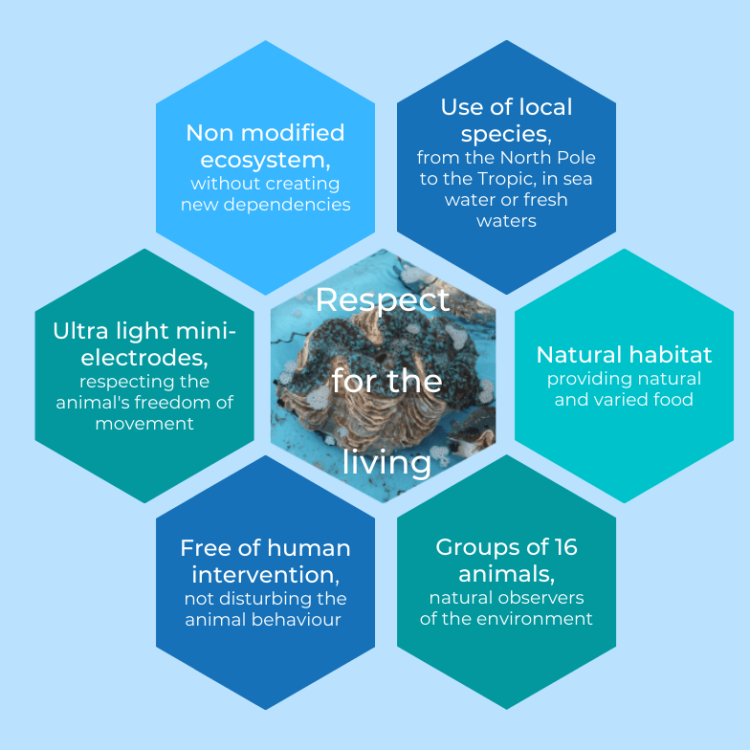
A solution based on Valvometry & the Internet of Things (IoT)
Our molluSCAN-eye® technology is based on the ability of bivalve mollusks to inform us about the quality of the water as soon as it disturbs them.
Behavioral analysis is the most sensitive tool available on the market. Applied in-situ, it is 10 to 100 times more sensitive than the chemical analysis of natural waters, without preconceived ideas about the nature of the pollutant, its degradation products or the unknown cocktail of molecules produced.
Thanks to tiny electromagnets glued to the valves, and the unique electronics and computing (embedded Linux), our systems monitor the opening and closing cycles of the valves, their growth, the spawn, etc. This technology, the High Frequency Non-Invasive Valvometry (HFNI), allows us to follow more than 10 different physiological and behavioral parameters daily and to realize daily health assessments.
This can be done 24/7 and remotely from any computer thanks to the Internet of Things: i.e. the exchange of information and data from the physical world (in this case animals and an on-board system) to the Internet.
ON SITE
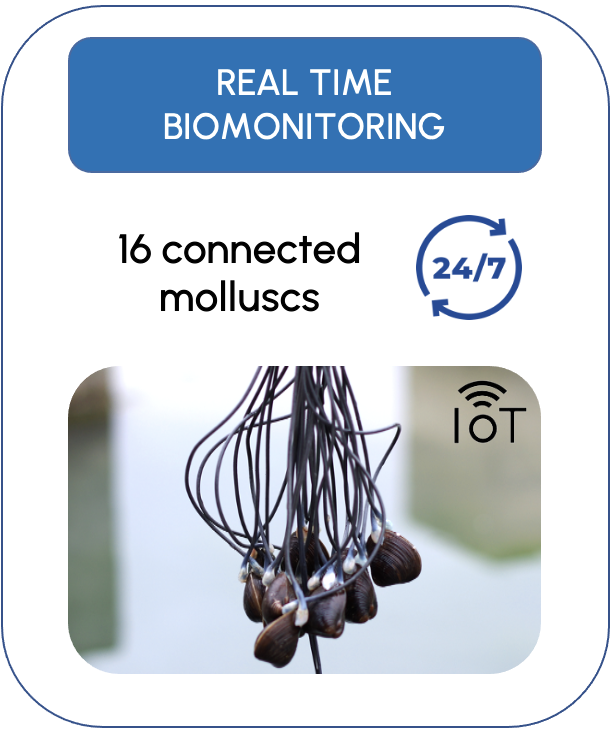
molluSCAN server - BORDEAUX
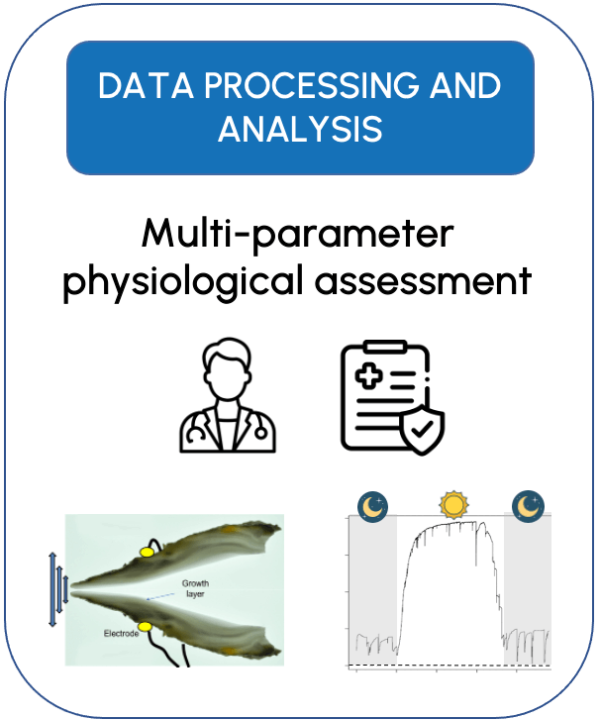
CLIENT
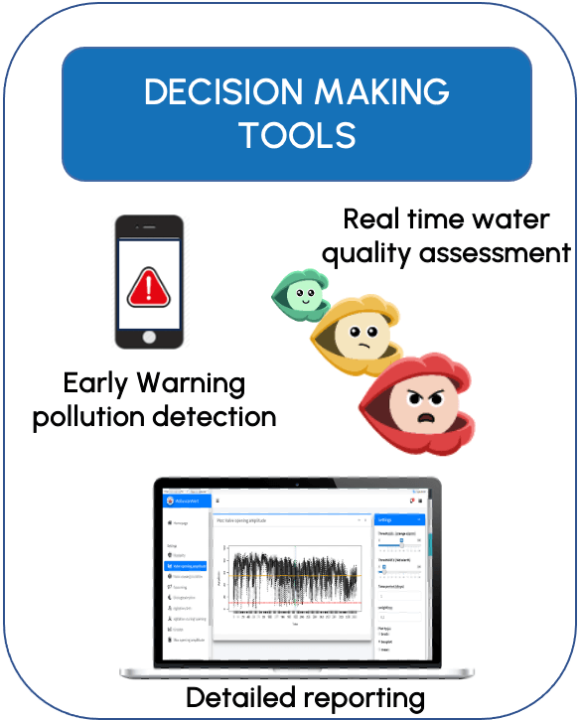
oysters, clams, mussels, scallops A daily online health check
As we are aware, bivalves ventilate throughout the day, filter suspended plankton particles to feed themselves and “taste” the water constantly. For example, any abnormality deemed dangerous by the animal is translated by a change in behavior such as more or less long closure of the valves to protect themselves. Death, valves wide open and motionless, are the ultimate responses.
We are not satisfied with a hypothetical rapid closure which would only be the sign of a very strong pollution.
We measure and quantify, in real time, around ten physiological parameters that allow an analysis as precise as a hospital check-up:
- The amplitude of the valves, an immediate indicator of the presence of pollutants and diseases
- Daily growth
- Egg laying
- Biological rhythms
- Mortality
- Duration of the opening
- Maximum opening time
- Daily agitation
- Daily agitation during opening periods
- Speed of closing (muscle contraction)
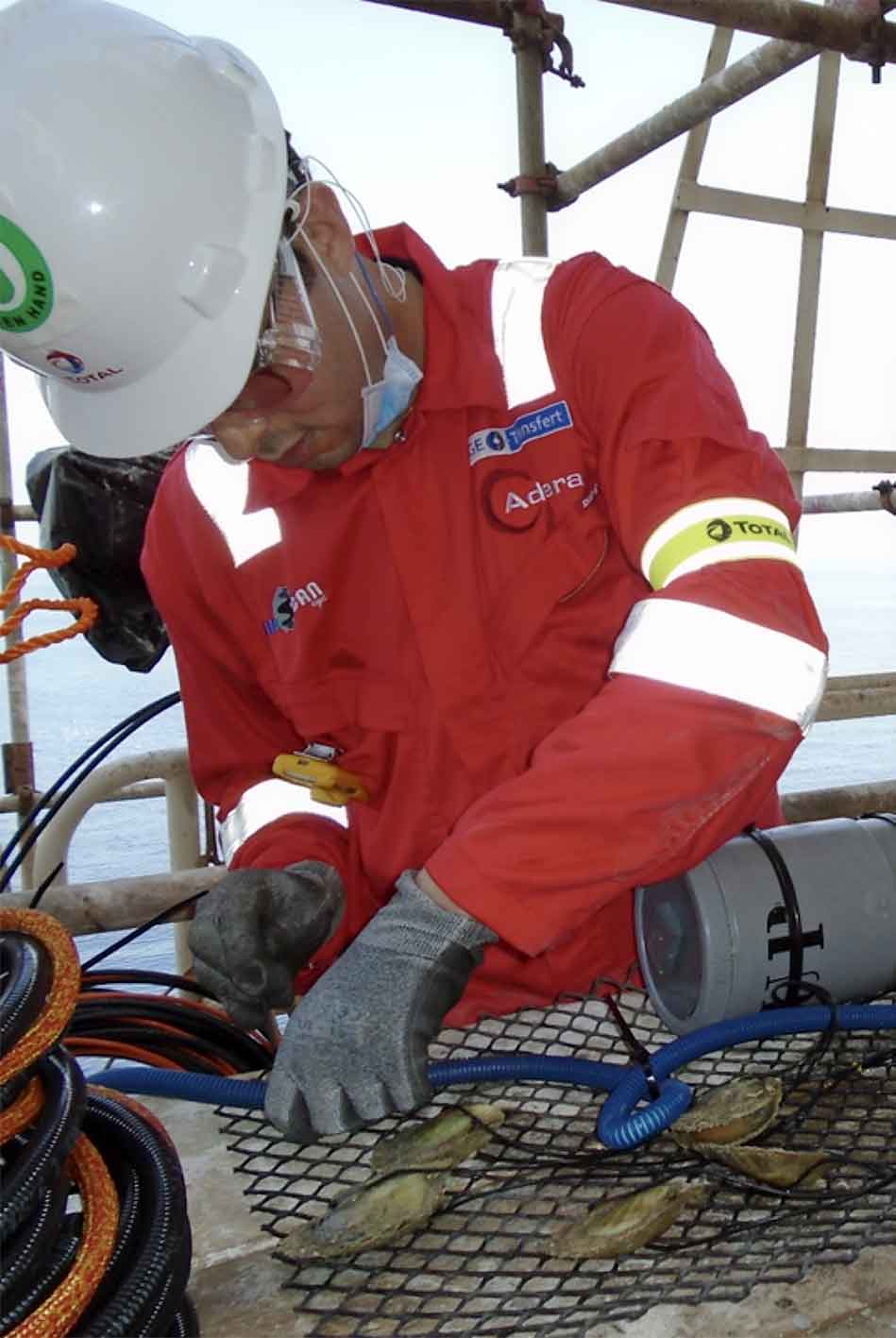
Operation Technical details
1. valve opening measurements Valvometry
A micro-electromagnet is glued onto each animal’s valve. The measurement of the valve gap, completely original (10 to 100 times more precise than the classical techniques), is performed between 2 coils of less than 1 gram. It is insensitive to variations of water turbidity and salinity as well as to fouling. It has been proven to be maintenance-free for over 3.5 years at sea.
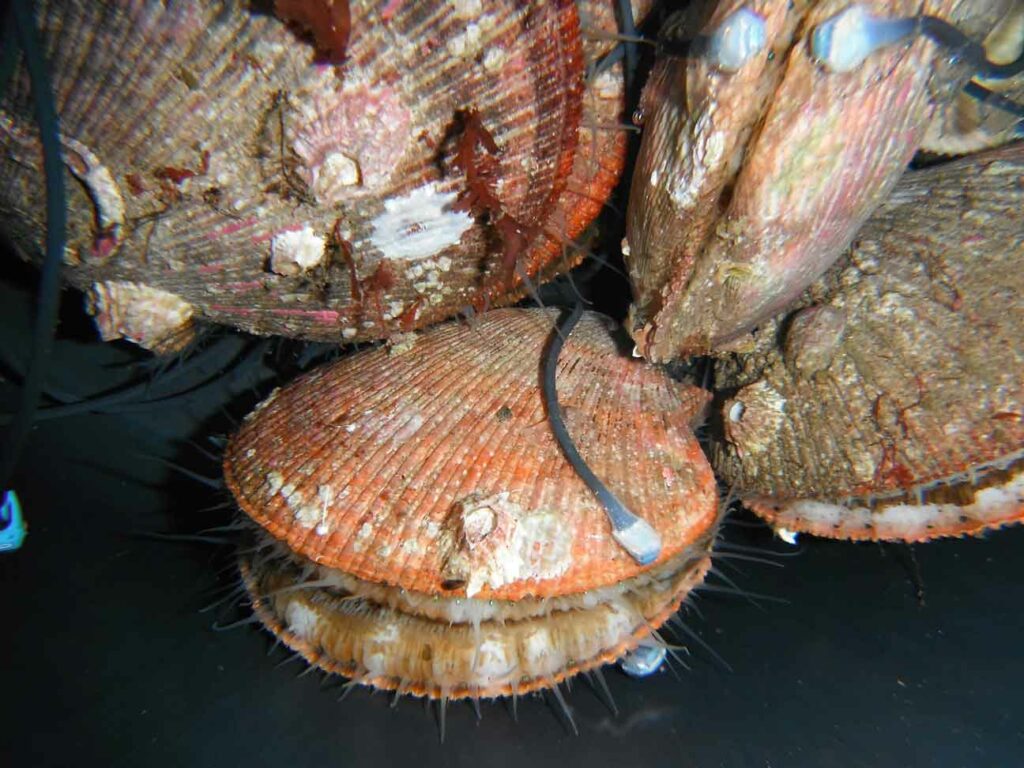
2. Amplification, digitization, multiplexing Acquisition
The management of the measurements and the signal is carried out under embedded Linux, on 2 cards. Card 1 is immersed in a waterproof case, as close as possible to the animals.
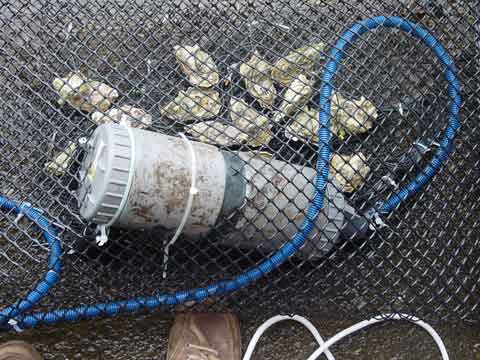
3. FROM THE FIELD TO THE LABORATORY Data transfer
Card 1 is connected to Card 2 on the surface via an umbilical cable (250 m max.). It manages the connectivity with the server at the Arcachon Marine Station. The combination of Card 1 – umbilical – Card 2 set is a real micro-computer, whose design we own. It runs under embedded Linux. The coded data is transmitted daily via the cell phone network or directly via an Ethernet socket.
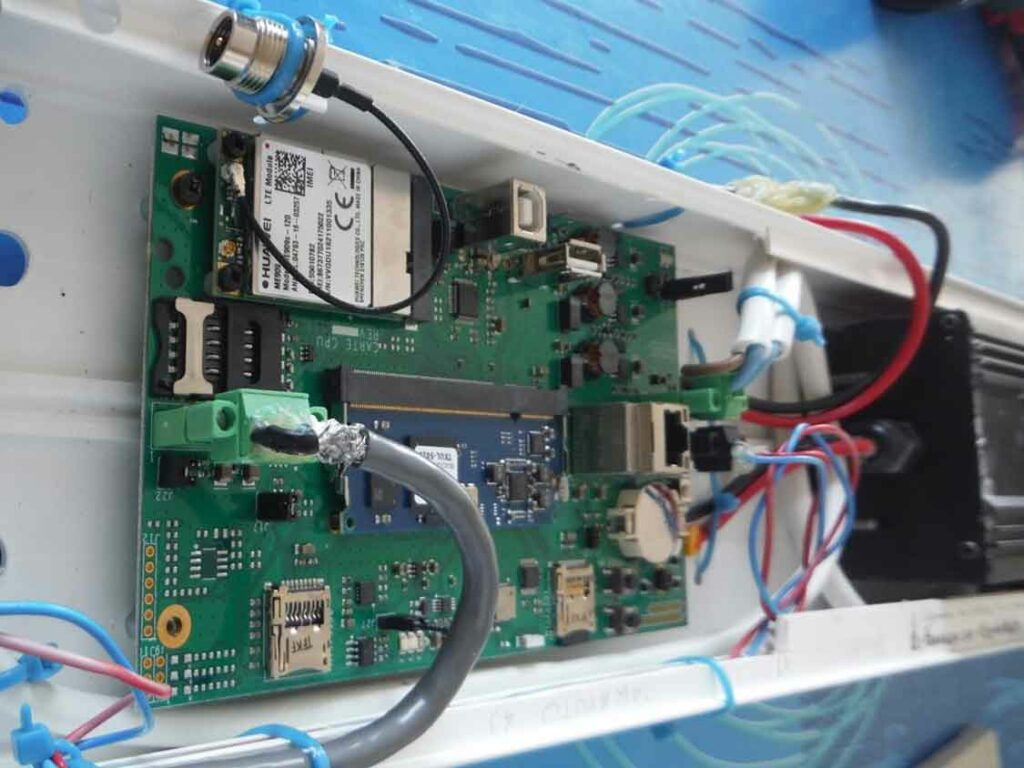
4. Receipt of registration & Storage of raw data
The files are decoded, processed and saved automatically upon arrival, on a workstation at the Arcachon Marine Station. Two backup sites, located in two different places from the main server, ensure security by redundancy. For each animal, the data recording is a sequence of points that each have two values:
- The distance between the two electrodes (i.e. the value of the valve distance at the height of the electrodes, expressed in micrometers).
- The time (expressed in hour, min, sec) which is the time at which the measurement is taken.
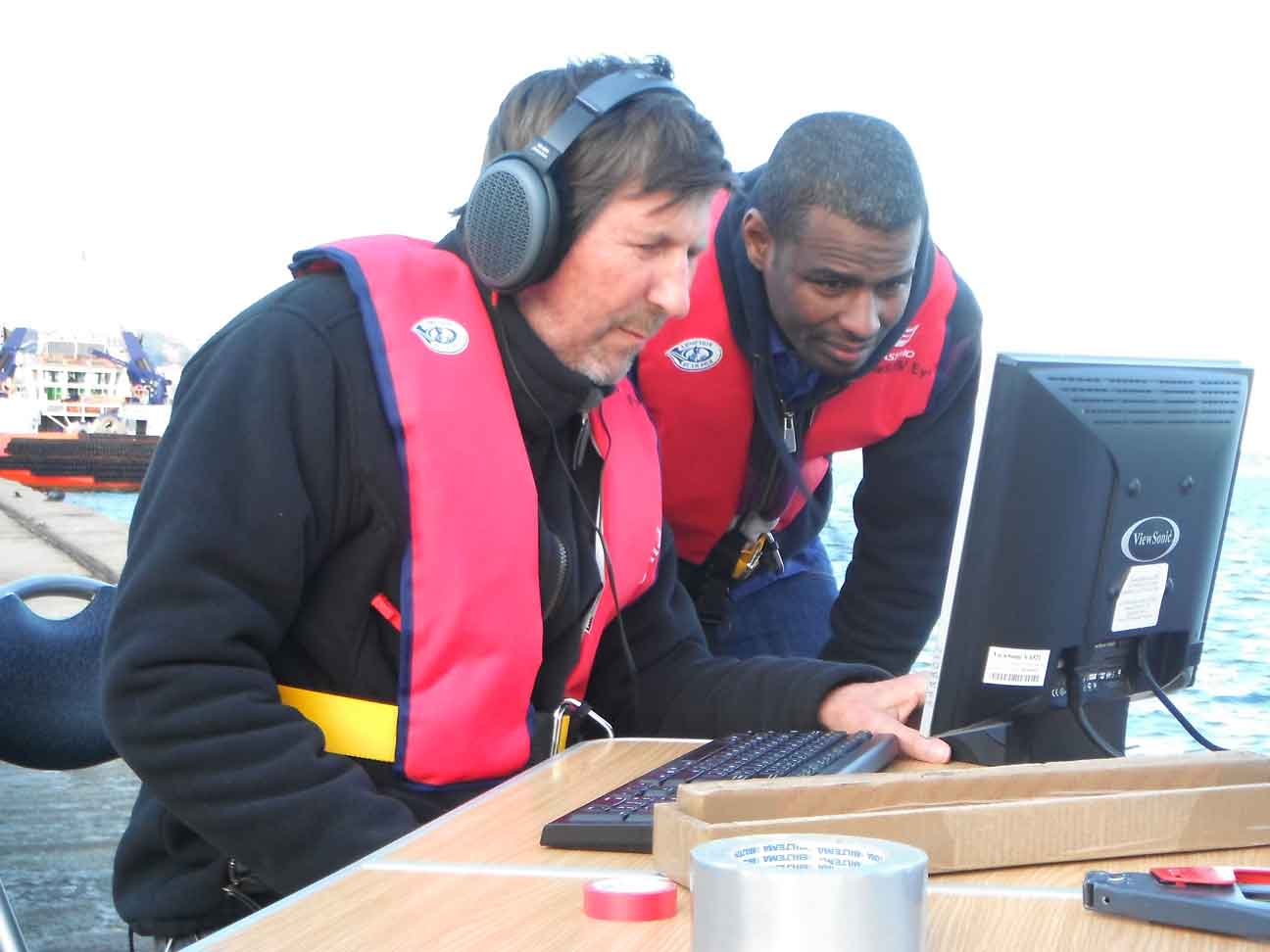
5. ANALYSIS & PROCESSING BY Artificial Intelligence
The daily updated results are available with a login and password. Our team monitors them and is always available to analyze and discuss them. The goal is to make this information available on the internet, in an automatic manner, every morning:
- by modeling the behavior and around ten physiological parameters on easy-to-read graphs
- in the form of green, orange or red summary indexes, we publish integrative information about the group of animals’ monitored health status and as a result, their environment as well
- we then move from monitoring sentinel animals, witnesses of the local biodiversity, to monitoring the quality of the environment, seen not by partial chemical analyses but by an integrative biomonitoring.

